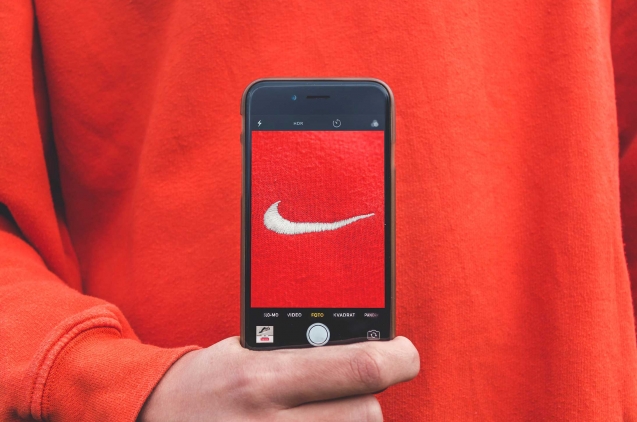How can we help?Get in touch
For a business, the brand is much more than a name. We may think that Nike is just Nike, but the famous "Just Do It'' is also part of your brand, as is the red of Coca Cola or as was the unmistakable ringtone of the most popular Nokia.
The brand of your business is the first step to success, just as a good melody is the first step to a good song. There is no better sales tool than building a good brand.
When we speak of brand we do so according to the AMA (American Marketing Association) of "a name, term, design, symbol or any other characteristic that identifies a seller's goods or services as distinct from those of other sellers." In other words, it is what makes our business unique and can be reflected in different concepts such as brand value, style standards or visual identity elements such as the logo or corporate colors, to give some examples.
Branding is essential because it is the process of creating a brand, something essential for any business to work. To establish a good brand, it is necessary to do polished and studied branding work by a team of professionals capable of polishing our virtues and with the ability to capture all that we are.
Why having a strong brand is important for your business
The main objective of a business is to achieve success and a strong brand is one of the tools with which to achieve it. Creating a good brand can bring us new customers and keep the ones we have already gained. It allows us to connect with consumers and get into their heads and be ever-present, like a teenage crush.
A strong brand can be the only one guilty of hooking buyers, an example of which is Apple. This brand has an entourage of groupies behind it that will follow it no matter what it does. If they sold clothes, the brand's followers would buy them. If Apple came out with an energy drink, it would be top of mind for its fans. Apple as a brand is the clearest example of the power it can have on your business. Everything that surrounds Apple is Apple. Its stores, the packaging of its products, its advertising messages, the communication of its new products, its colors, its website. Everything is designed to have the essence of Apple as a brand. And it is such a consolidated and strong brand that it has license to, for example, raise prices without affecting its sales too much, or to launch new phones that barely differ from the previous generation.
Having a strong brand is a way of gaining the trust necessary for your customers to become loyal, to leave a mark on them, to be remembered as a brand. It is a tool to stand out from the competition and to achieve assiduity. Some people always buy the same brand of milk, always consume on the same streaming platform or always wear the same brand of clothing.
If the brand is consolidated and gains reliability as well as loyal customers, we will have a reduction in marketing expenses and an increase in sales. We will grow and surpass our competitors and we will be able to face possible crises much better. In addition, a strong brand is a dream brand for workers (look at Google) and loved by customers.
How to have a strong brand
The name, brand pillar
If a friend introduces you to Juan, Victor, Sonia, Luis and Attila, who would you remember the next day by name alone? The first step to remember someone (or something) is the name, that's why this is the base pillar on which your entire brand must rest. Something easy to memorize, powerful, stylish, original. Think of great brands. Names like Zara, Adidas, Tesla or Chanel come to mind. You're unlikely to think of long names or names as complicated to pronounce as Renée Zellweger's last name.
That doesn't mean that more complex names can't be successful, but it does make the job harder, so forget about putting sticks in your wheels and come up with a simple, creative and evocative naming that's easy to memorize. No one said it would be easy, but let's say it's not impossible either.
Branding + Visual Identity
The second point after the name is to work on branding and visual identity, and it is the most important point to have a strong brand. Visual identity could be defined as what we see: logo, colors, typography and other visual elements that are applied for example in bags, business cards or email signatures. And the term branding refers to the whole process of defining and building a brand image, including visual identity.
Think of Porsche. It is a brand that exudes elegance and luxury, just like its cars. Its values are reflected in its designs, in the way it communicates, in its social networks. It has worked both branding and visual identity in each and every one of the elements that make up the brand, from the logo to the name through the product itself.
Ver esta publicación en Instagram Una publicación compartida de Porsche Ibérica (@porsche_iberica)
A well-worked branding is key to turn our brand into something powerful. The easiest way to understand how important this step is is to see it as a Viking ship that takes us from Norway to England. We need it to be sturdy, solid and effective so that it can ride the waves without exhausting us rowing and so that we don't drown in a storm. Branding is our boat, so let's invest in it.
Work on your brand essence
It should be a point within branding, but working on the essence of your brand is so vital to create something that makes an impact that it was essential to bring it out. Every brand can be unique and the key is to find out what makes you unique. Are you special because you only work with natural products made by tattooed ladies and gentlemen, like the cosmetics and personal care brand Lush? Is the key to your products that every design is a redesign of your brand logo like Deus? Think about what's unique about your business so you can create a unique brand.
Emotions matter
IKEA could have been a brand that sells furniture, but it has preferred to sell homes, and in that difference lies its power. IKEA pursues emotions that it manages to capture, for example, in the spaces of its stores. If you walk through its decorated rooms, it seems that people live there. So much so that you could sit on one of its sofas and imagine that couple on a Friday night, wrapped in a blanket and watching TV resting gently on a piece of BESTÅ furniture.
The brand must provide the humanism necessary to connect with our users. It is not only about selling the best product, but that our brand makes them feel something. A cold brand is a forgotten brand.
Communication in all its forms
My grandmother always said that it is as important to be a good person as it is to look like one. It's not only about knowing who we are as a brand, but also about knowing how to communicate it to our customers. Are you a rogue brand, with original products and that wants to stand out from the rest by manufacturing only in Spain? Say it. Show yourself and show off all those values that define your business.
Use social networks as the valuable tool they are and forget about turning Instagram into a showcase for your products. Go a step further and connect with your users to position yourself and elevate your brand to the next level.
And watch out, because communicating is not just about talking. The images with which we transmit, for example those of our products, must also be part of us. Take care of the aesthetics and think that form and substance must always go hand in hand. We cannot be a sustainable company and then fill the mailboxes of a neighborhood with printed brochures.
We could close this article with the axiom that "a business without a strong enough brand is a business doomed to fail". But chances are you already know that, so we'd better tell you that any business can turn its brand into one as strong as concrete. You just need a team of branding experts like ours to make the change happen. Shall we talk?
Main photo: Claudio Schwarz











